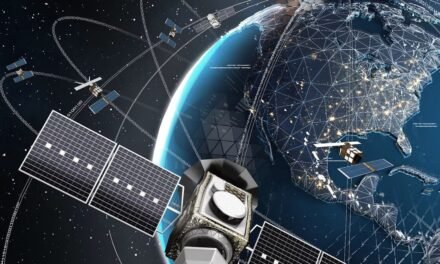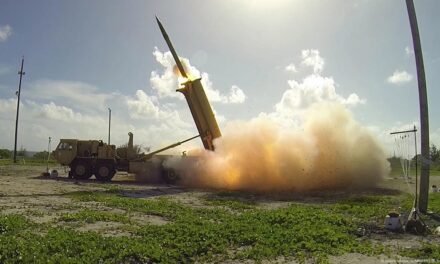Artificial Intelligence (AI) and Machine Learning (ML) are transforming space exploration by enabling smarter, faster, and more autonomous operations. They play a pivotal role in a variety of applications, from mission planning and spacecraft navigation to data analysis and planetary exploration. Here’s a detailed look at their roles:
1. Autonomous Spacecraft Operations
AI and ML enable spacecraft to perform tasks autonomously, reducing the need for real-time intervention from ground control.
- Autonomous Navigation:
- AI-powered systems allow spacecraft to navigate complex environments, such as asteroid belts or planetary surfaces.
- Example: NASA’s Perseverance rover uses AI to autonomously select paths on Mars, avoiding obstacles.
- Onboard Decision-Making:
- Satellites and rovers equipped with AI can analyze data and make decisions, such as selecting observation targets or adjusting their operations based on conditions.
- Example: The European Space Agency’s EarthCARE satellite uses AI to optimize instrument settings in real-time.
2. Data Analysis and Processing
Space missions generate vast amounts of data, which AI and ML algorithms process efficiently to extract meaningful insights.
- Image and Signal Processing:
- AI analyzes images from telescopes and space probes, identifying celestial objects, geological features, and anomalies.
- Example: The Hubble Space Telescope uses AI to classify galaxies in deep space.
- Pattern Recognition:
- ML models identify patterns in large datasets, such as atmospheric changes or gravitational waves, aiding scientific discoveries.
- Example: AI helped discover new exoplanets by analyzing light curve data from NASA’s Kepler mission.
3. Planetary Exploration
AI and ML enhance the ability to explore planetary surfaces and atmospheres.
- Rover Operations:
- AI enables rovers to autonomously explore and analyze terrain, collect samples, and conduct experiments.
- Example: Curiosity and Perseverance rovers on Mars use AI for sample selection and environmental analysis.
- Landing Site Selection:
- ML algorithms analyze terrain data to identify safe and scientifically valuable landing sites for missions.
- Example: AI was used to help choose landing sites for the Chandrayaan-3 lunar mission.
4. Spacecraft Health Monitoring
AI is essential for monitoring the health and performance of spacecraft systems.
- Predictive Maintenance:
- ML models predict potential system failures by analyzing telemetry data, enabling proactive repairs or adjustments.
- Example: AI systems on the ISS monitor equipment and suggest maintenance schedules.
- Anomaly Detection:
- AI identifies deviations from normal operation in spacecraft systems, ensuring quick responses to potential issues.
- Example: The European Space Operations Centre (ESOC) uses AI for real-time anomaly detection.
5. Satellite Operations
AI optimizes satellite operations, making them more efficient and cost-effective.
- Orbital Management:
- AI assists in collision avoidance by predicting potential debris encounters and calculating optimal maneuvers.
- Example: AI algorithms help Starlink satellites avoid collisions in crowded orbits.
- Data Compression and Transmission:
- ML compresses satellite data for efficient transmission to Earth, preserving bandwidth and reducing latency.
6. Astronaut Assistance
AI enhances the safety and efficiency of human spaceflight missions.
- Virtual Assistants:
- AI-powered assistants, like CIMON on the ISS, help astronauts by answering questions, monitoring tasks, and providing guidance.
- Health Monitoring:
- ML analyzes astronauts’ medical data to monitor their health and predict potential issues during long-duration missions.
7. Deep Space Exploration
AI and ML enable advanced capabilities for exploring distant celestial bodies.
- Interplanetary Communication:
- AI optimizes data transmission between Earth and spacecraft in deep space, accounting for signal delays and bandwidth limitations.
- Autonomous Science:
- Spacecraft can conduct science experiments and adapt to new discoveries without waiting for instructions from Earth.
8. Space Debris Management
AI is critical for tracking and managing the growing issue of space debris.
- Collision Prediction:
- ML models predict the likelihood of collisions between debris and operational satellites.
- Example: AI tools are used by agencies like ESA and NASA for space traffic management.
- Debris Removal:
- AI guides autonomous debris removal systems to track, capture, and deorbit space junk.
9. Astronomy and Astrophysics
AI assists in uncovering insights about the universe.
- Exoplanet Detection:
- ML analyzes light curves and other data to identify subtle patterns indicative of exoplanets.
- Example: AI discovered new exoplanets in data from NASA’s TESS mission.
- Gravitational Wave Analysis:
- AI detects and analyzes gravitational waves by processing data from observatories like LIGO.
10. Mission Planning and Simulation
AI supports mission design and execution by optimizing planning and simulating complex scenarios.
- Trajectory Optimization:
- AI calculates efficient flight paths for spacecraft, saving fuel and time.
- Example: AI-driven trajectory planning is used in missions to asteroids and comets.
- Mission Simulations:
- AI-powered simulations model mission scenarios, including potential failures, to improve mission robustness.
11. Advanced Robotics
AI-driven robotics enable complex operations in space.
- Manipulators and Drones:
- AI powers robotic arms and drones for satellite servicing, sample collection, and construction.
- Example: NASA’s Astrobee robots assist astronauts with routine tasks aboard the ISS.
- Construction of Space Habitats:
- AI-driven robotics are being developed for autonomous assembly of habitats on the Moon and Mars.
12. Terraforming and Long-Term Exploration
AI may play a role in future terraforming efforts and sustaining long-duration missions.
- Environmental Monitoring:
- AI systems could monitor and control environments for human habitats on Mars or the Moon.
- Resource Utilization:
- AI identifies and manages the extraction of in-situ resources, such as water or regolith.
Challenges and Future Directions
- Data Quality: Ensuring accurate data for AI training to avoid errors in critical systems.
- Reliability: Building robust AI systems that can function in extreme and unpredictable space environments.
- Ethics and Trust: Developing AI that operates transparently and aligns with mission objectives.
Conclusion
AI and ML are becoming indispensable tools in space exploration, driving autonomy, efficiency, and discovery. As technology continues to advance, AI’s role will expand, enabling humanity to tackle increasingly ambitious missions, from exploring distant planets to managing sustainable operations in space.
Hashtags
#AIInSpace #MLInSpaceExploration #SmartSpaceTech #AIForSpaceMissions #MachineLearningInSpace #AIForDeepSpaceExploration #MLForSpaceResearch #SmartSpaceExploration #AIInSpaceScience #AIForPlanetaryExploration #SpaceDataAnalysis #AIForSpaceData #BigDataInSpace #MLForSpaceInsights #IntelligentDataProcessing #AutonomousSpaceMissions #AIForSpaceRobots #SmartExplorationRobots #AIForRovers #MLInSpaceAutonomy #AIForSatellites #MLInSatelliteTech #SmartSatelliteOperations













